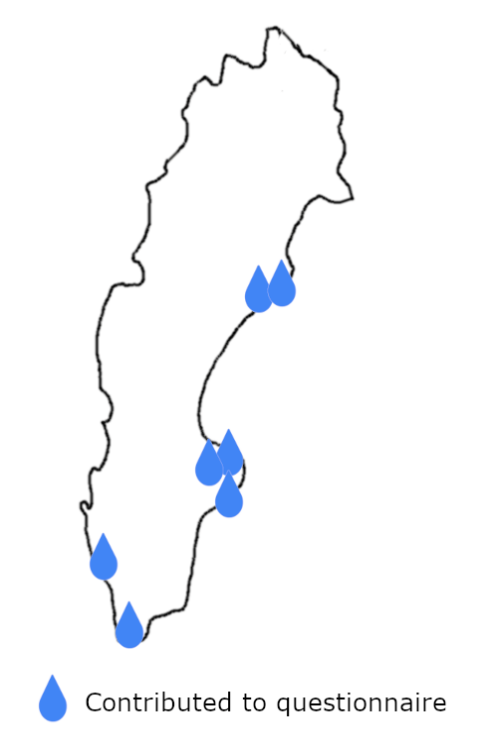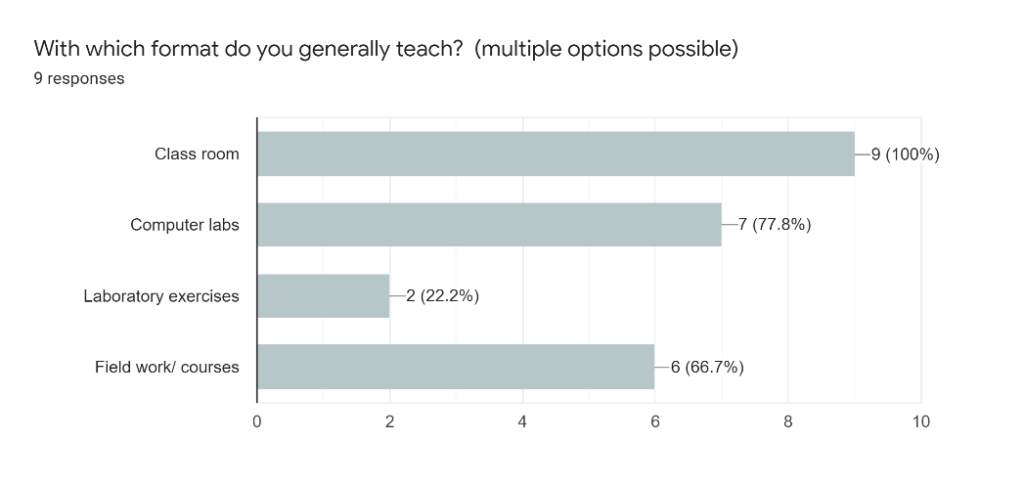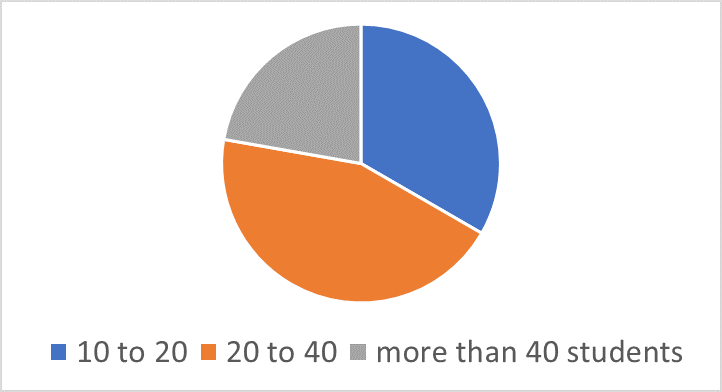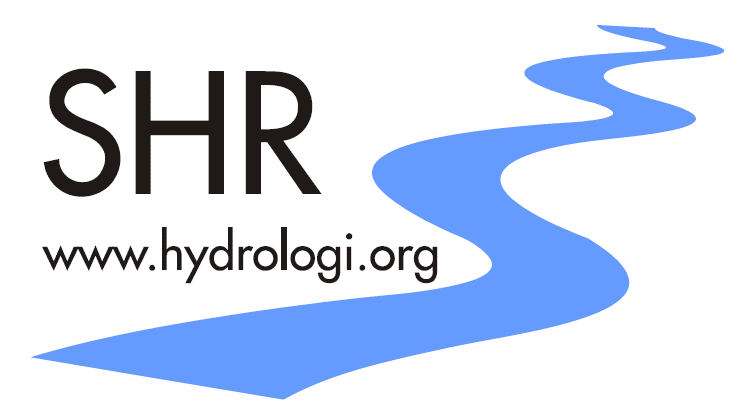Skrivet av: Benjamin Fischer
COVID19 caused disruptions in the way we live as society. We were interested to understand how the education of hydrology and water related sciences in Sweden got affected by Covid19 (period March to October 2020). To get an overview we sent a questionnaire to the SHR members and the wider network, all part of the main universities in Sweden.
We received a snapshot overview from nine participants representing the main Universities in water education at bachelor or master level (figure 1).

All universities reported, that they had to change abruptly from in class teaching to teaching remotely in March 2020. In addition, it was reported that to comply with social distance field trips and some courses were cancelled. Next to teaching in a virtual class room environment, teachers used mixed learning (e.g. pre-recorded lectures and remote question hours), feedback seminars or individual-based field activities, online video material, virtual laboratory or field excursions, reading and discussion exercises, up to do-it-yourself low-tech field experiments.
During the first part of the autumn term distance teaching was continued but to some extend some class room teaching with reduced number of students and more local field trips were held.
The teachers experience and by teachers reported students experience was diverse from positive up to negative (figure 2). From teachers’ point of view, the main challenge reported was the physical distance and loss of contact with students which made it difficult to monitor the student’s performance and build professional relations. Also, the change to novel teaching methods and software was perceived not always easy. Teachers who have not yet made the switch to distance education were uneasy with concerns.
Instead from student feedback it seems that they understood the situation and challenges with current teaching and were largely neutral.

To overcome negative experience of education during COVID19, some teachers purposed larger rooms to be able to keep distance during on campus classes, mixed physical/ distance lectures and shorter distance lectures with more brakes.
Open feedback concerning teaching during COVID19 were:
- Positive in terms of resources mobilized by University to facilitate distance teaching and minimize students delay
- However, it seems unclear if extra working time of teachers will be compensated for
- Understanding from students about the challenges in teaching in this situation
- Teachers should support each other as much as possible with available resources
Despite only nine responses, the held questionnaire gives only a first indication on how COVID19 affected water education at the different Universities in Sweden. COVID19 caused not only a disruption in society but also water education in Sweden. A large effort and creativity made it possible to keep up the core of water education. However, also important elements in water education such as field excursion were cancelled and contact between teacher student got lost affecting the knowledge transfer. The long-term effect on water education in Sweden and the effect on teachers and students should be investigated more systematically. Next to these negative aspects of COVID19 the abrupt changes in water education provides also opportunities to explore novel forms of teaching to prepare water education in Sweden for the future.
For now, most important is to keep distance and stay healthy!!
Your, SHR-team
Participants and background information
(The author did not contribute to the questionnaire. )
The courses thought by the responders were general hydrology, hydrological modelling, forest management, ecology, biogeochemistry, forestry, sustainability and environmental science, geography, statistics, sustainable development, fluvial geomorphology, GIS, soil science and geology. Class room lectures were the most frequent lecture style, followed by computer labs, field courses and some laboratory exercises (figure 3). Per course the average number of students ranges from 10 up to more than 40 students in which class room teaching (figure 4).


Questions asked
- At which University do you teach?
- What is your background or do you see yourself (e.g. hydrologist, ecology, water manager, sociology …)?
- What is your role in teaching? (one option possible)
- Which level of courses do you teach? (multiple options possible)
- Which courses do you teach (hydrology, ecology …)?
- How many students do you on average have in your courses? (one options possible)
- With which format do you generally teach? (multiple options possible)
- Describe shortly which measures your University took during Covid19
- Describe shortly how teaching got affected due to Covid19
- Which methods in teaching did you use to continue teaching?
- If teaching changed, was this a positive or negative development from a teacher’s point of view?
- If teaching changed, was student feedback positive or negative?
- In case teachers or students had negative experiences, what could be done to overcome these limitations?
- Open feedback (you can write here additional information you want to share concerning teaching during Covid19)
